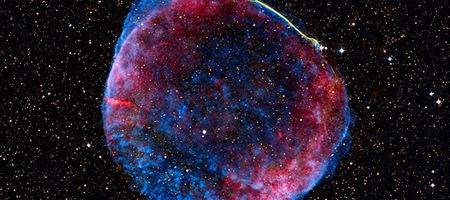Astronomers reckon they’ve found the cause of the brightest stellar event ever recorded: a supernova first observed on April 30 1006 that continued to shine for three years.

Seen by civilizations around the world, the supernova was said to be about a quarter as bright as the moon by contemporary Egyptian doctor and astronomer Ali ibn Ridwan.
But a search for a star that could have exploded at this time has come up a blank.
“We have conducted an exhaustive exploration of the area around where the explosion of the supernova of 1006 occurred and have found nothing, which invites us to think that this event was probably the result of a collision and merger of two white dwarf stars of similar mass,” says Instituto de Astrofísica de Canarias researcher Jonay González Hernández.
Binary systems of this type can be formed by a white dwarf and a normal stellar companion that contributes enough matter for it to reach a critical mass of 1.4 times the mass of the sun, the so-called Chandrasekhar limit. Once this mass is reached, the stars explode in a supernova.
Another possibility is that the system comprises two white dwarfs that eventually merge, creating a supernova. And this is more likely, says the team, as previous research has indicated that it’s a common cause of supernovae.
When a white dwarf’s mass reaches the Chandrasekhar limit, it tends to expel all its matter, leaving nothing behind – the situation the astronomers have observed.
“Analysis of the stars in the area of the explosion discarded them as possible companions of the progenitor star of the supernova of 1006,” says González Hernández.
“Only four giant stars are found at the same distance as the remnant of the supernova of 1006, some 7,000 light years from Earth, but the numerical simulations do not predict a companion of these characteristics.”
The researchers now plan to turn their attention to another famous supernova, Kepler’s supernova of 1604.






